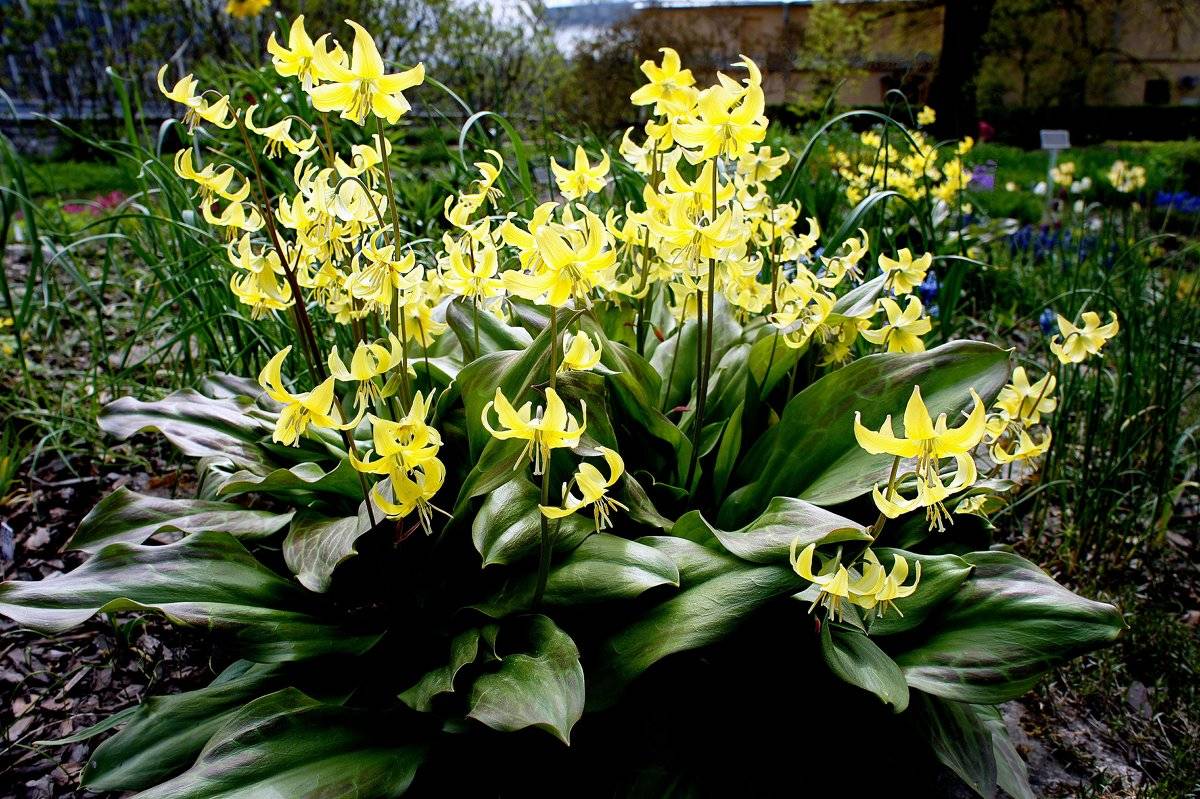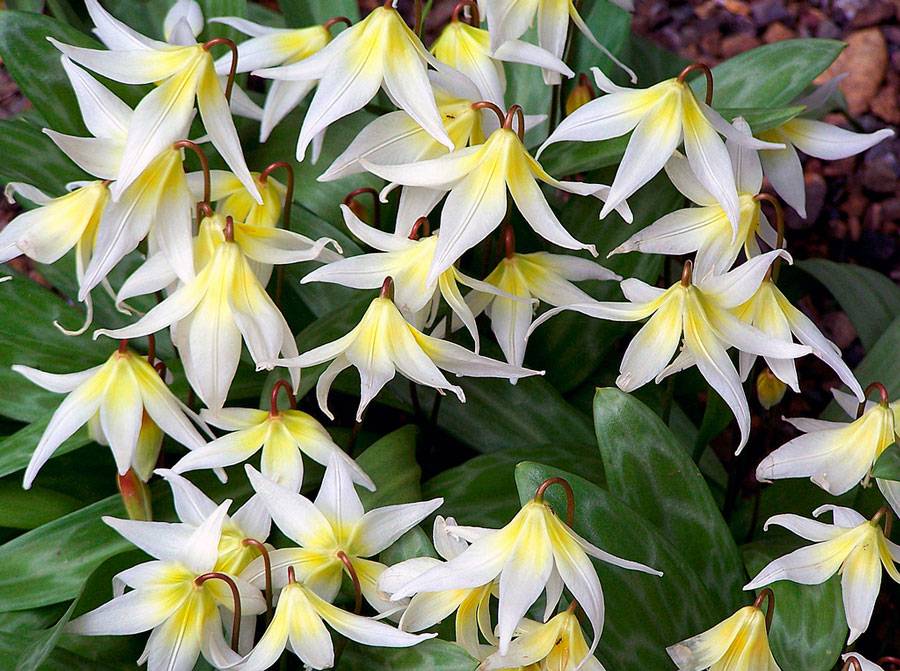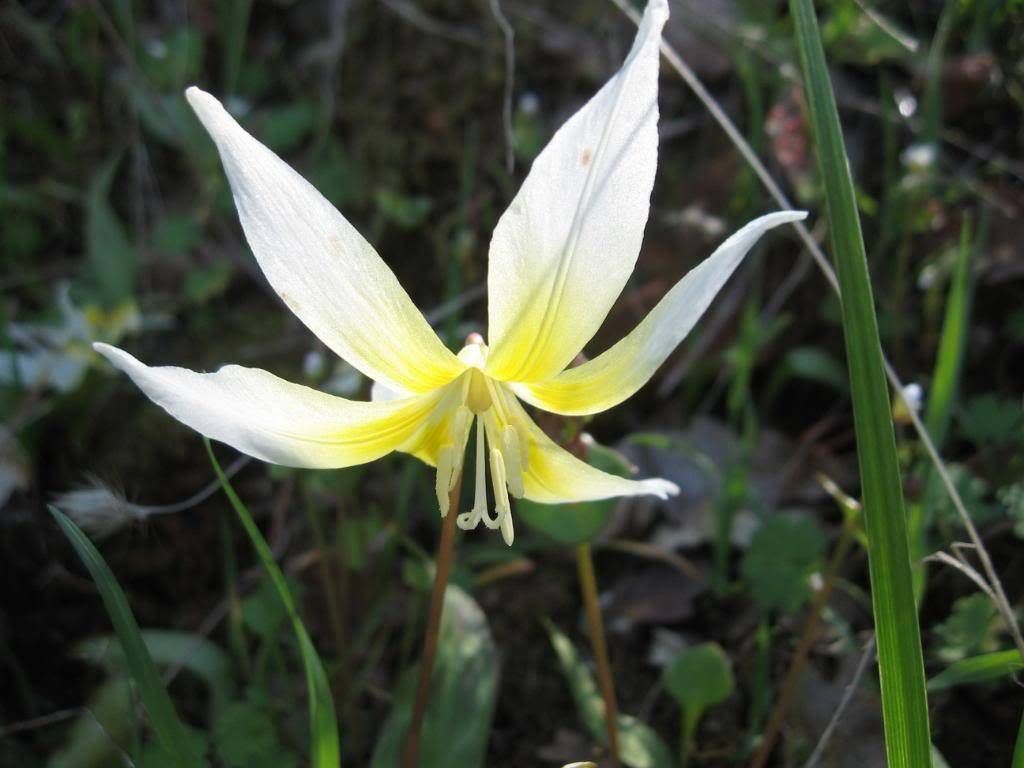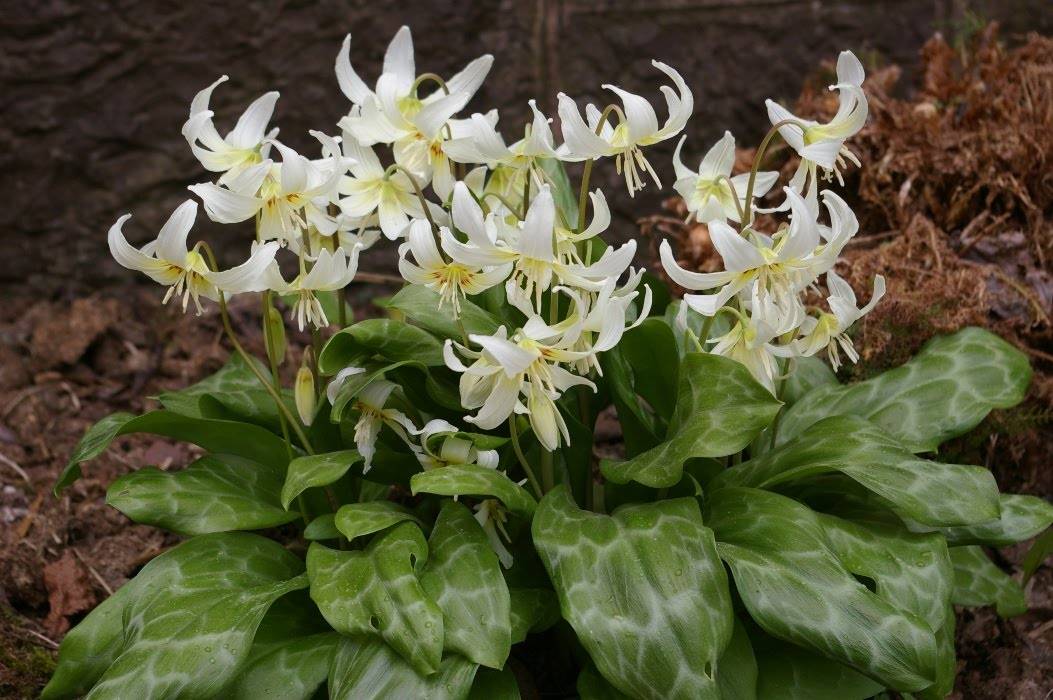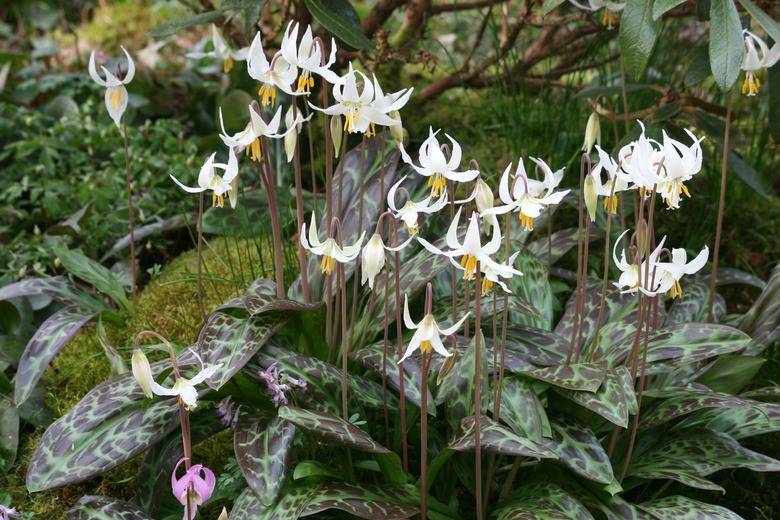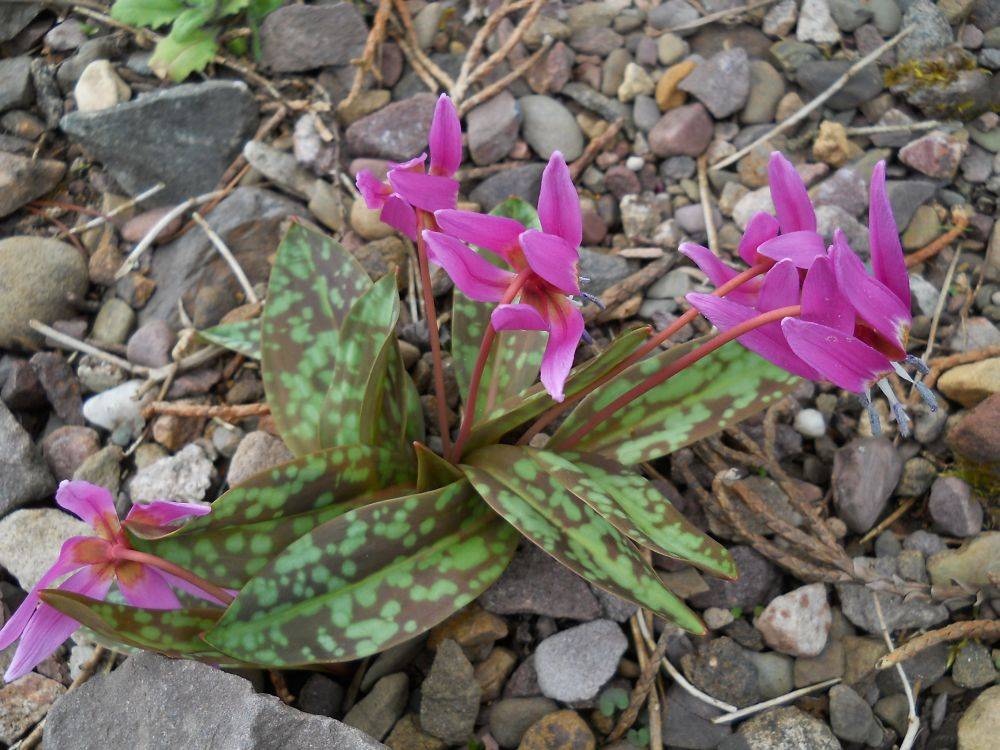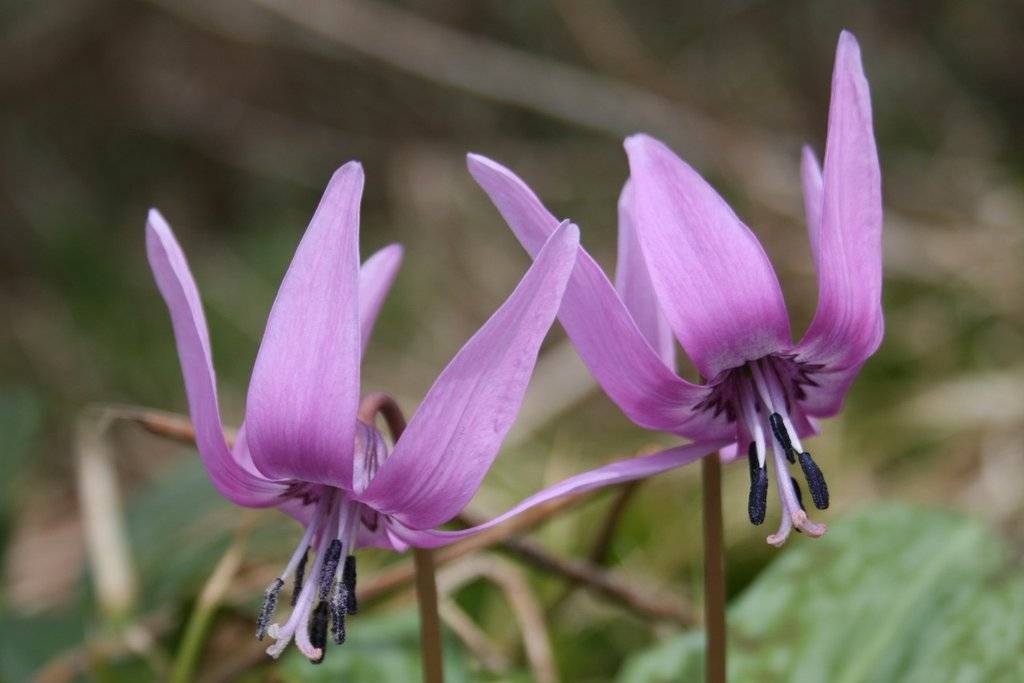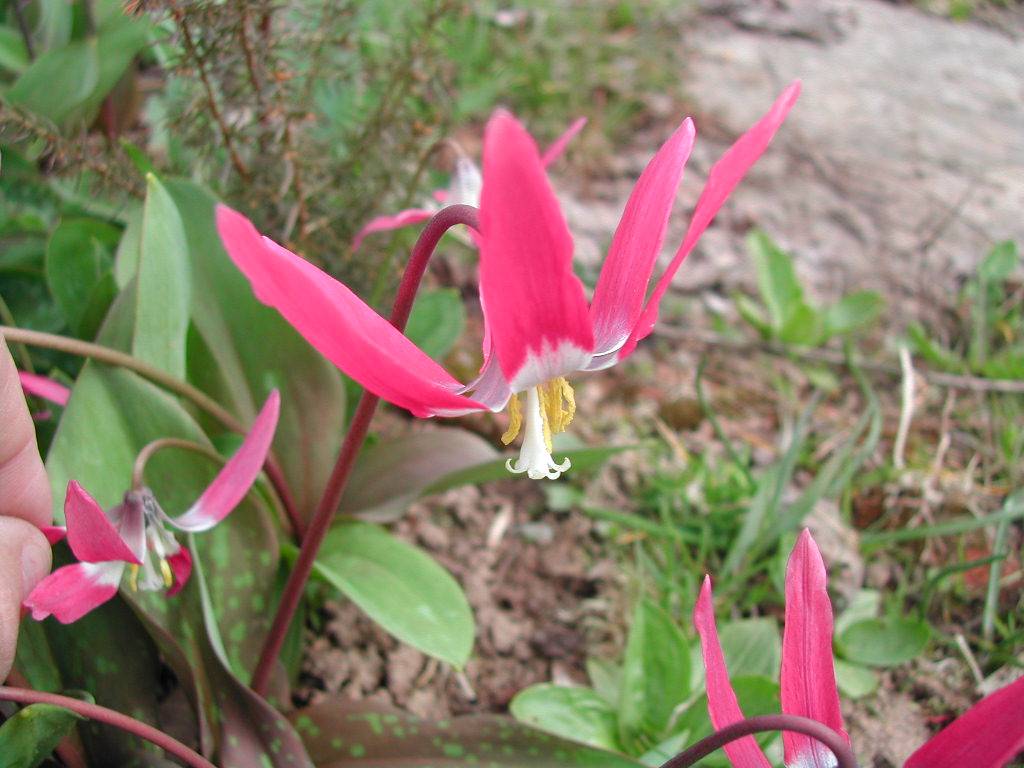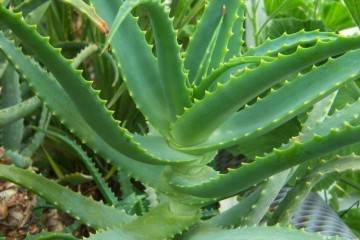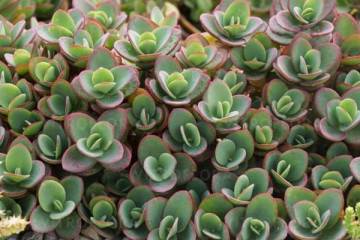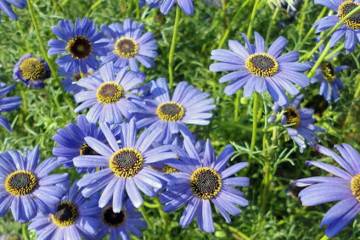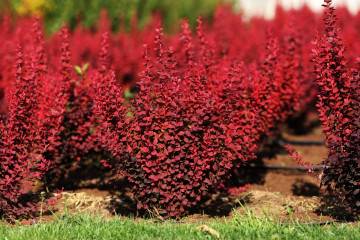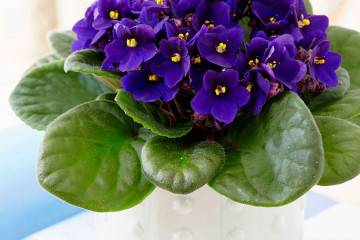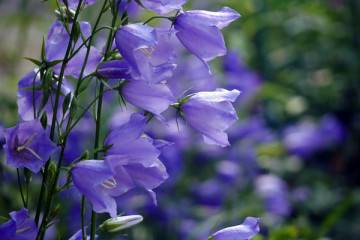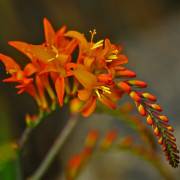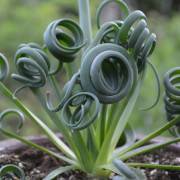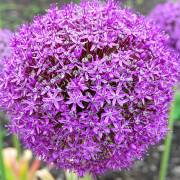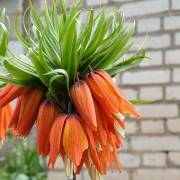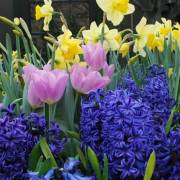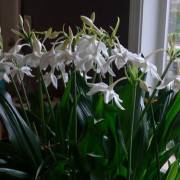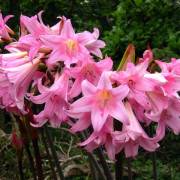Erythronium pagoda (Erythronium) - plant description
Content:
- Botanical description of erythronium pagoda
- Description of erythronium species and characteristics of their varieties
- Erythronium American (lat.Erythronium americanum, Erythronium angustatum, Erythronium bracteatum)
- Erythronium whitish (lat.Erythronium albidum)
- Erythronium multistem (lat.Erythronium multiscapoideum, Erythronium hartwegii)
- Erythronium Henderson (lat.Erythronium hendersonii)
- Erythronium mountain (lat.Erythronium montanum)
- Kandyk lemon yellow (lat.Erythronium citrinum)
- Erythronium californicum (lat.Erythronium californicum)
- Kandyk large (lat.Erythronium grandiflorum)
- Erythronium Oregonum (lat.Erythronium oregonum), or erythronium turned away, or wrapped (lat.Erythronium revolutum)
- Erythronium tuolumnensky (lat.Erythronium tuolumnense)
- Erythronium Siberian (lat.Erythronium sibiricum, Erythronium dens-canis var.sibiricum)
- Erythronium Caucasian (lat.Erythronium caucasicum)
- Erythronium European (lat.Erythronium dens-canis), or Dog's tooth (lat.Erythronium maculatum)
- Erythronium Japanese (lat.Erythronium japonicum)
- Erythronium hybrid (lat.Erythronium hybridum)
- Kandyk: planting and care in the garden
- Kandyk flower: when and how it blooms
- Kandyk: planting and care in the open field with seeds
- Bulb planting
- Possible problems in growing erythronium
The bulbous ephemeroid erythronium is better known as kandyk. Its natural forms are seriously different from the garden ones, famous for the splendor and beauty of flowering.
Botanical description of erythronium pagoda
A perennial from the Liliaceae family (lat.Liliaceae) kandyk (lat.Erythronium) is often called erythronium. The underground part is a bulb. All 29 species are early spring ephemeroids (after the flowers wither, the aerial part dries up).
Briefly about the history of appearance
Kandyk means "dog's tooth" (translated from Turkic), and erythronium is translated from ancient Greek as "red". Erythronium pagoda (Pagoda), aka Tuolumni (lat.Erythronium tuolumnense) is just a species of kandyk that grows in the European, North American and Japanese mountains, and in the Russian Federation - from the Caucasus to Siberia.
Plant features
Kandyk flowers bloom in early spring (in the last decade of March). The flowers have a lot in common with lilies, their corollas of 6 monochromatic or multi-colored petals. Each bulb is capable of producing 1 or more peduncles ending in a single bud. The color of the kandyk is varied: yellow, purple, white, pink, etc.
The height of most varieties of erythronium does not exceed 50 cm. The underground part is a bulb that, after the snow melts, expels several large fleshy leaves of a monochromatic or variegated color, resembling the foliage of tulips or lilies of the valley.
Beneficial features
Where certain types of erythronium grow, the local population often uses the bulbs for food. The plant is often included in the composition of traditional medicine recipes for worms, intestinal colic, and in some areas it is used as an aphrodisiac, anesthetic, disinfectant and even an antibiotic.
Description of erythronium species and characteristics of their varieties
Wild natural varieties are almost never found in flower beds, as they are capricious to the composition of the soil and other conditions. Moreover, they are all valuable material for obtaining garden varieties and hybrid forms.
Erythronium American (lat.Erythronium americanum, Erythronium angustatum, Erythronium bracteatum)
A short-growing species, its height is usually 10-18 cm, sometimes up to 30 cm, with purple specks on green elliptical-lanceolate leaves (8-23 cm).Each flower is about 30 mm in diameter, it is golden with pink-purple or brown specks. The petals are bent outward.
Erythronium whitish (lat.Erythronium albidum)
Is of American and Canadian descent. Outwardly, there is a lot in common with the American kandyk (the leaves are exactly the same), but the perianth is without lobes, and the color is never lemon. Flowers are lilac, crimson, less often milky or azure.
Erythronium multistem (lat.Erythronium multiscapoideum, Erythronium hartwegii)
A perennial plant of the subtropics native to the United States. The bulbs are capable of forming stolons. The leaf has an uneven marble-like color with whitish streaks. On slender stems, 1-3 drooping cream-colored flowers with an orange base, after wilting they turn pink.
Erythronium Henderson (lat.Erythronium hendersonii)
Known since 1887 and found in Oregon. Prefers drained soils, bright light. It has a peculiarity - the bulb continues with a short rhizome. Dark brown specks cover the green foliage. The height of the rosette does not exceed 10-30 cm.
Erythronium mountain (lat.Erythronium montanum)
A very graceful natural species native to alpine meadows in the northwestern United States. Stems up to 45 cm. Leaves are oval, tapering towards the base. The flowers are white or pale crimson with an orange heart.
Kandyk lemon yellow (lat.Erythronium citrinum)
The species is endemic to forests in the mountains of the western states of the United States. The leaf has a shortened petiole, it is spiky, very wide, emerald with streaks. On stems (up to 20 cm), 1-9 buds, blossoming honey-colored flowers. Fading perianths turn pink.
Erythronium californicum (lat.Erythronium californicum)
This kandyk is from the California forests. Elongated light green foliage 10 cm long is covered with light stains. On the stems (up to 35 cm), 1-3 flowers bloom with whitish-cream edges of the petals and an orange center.
Kandyk large (lat.Erythronium grandiflorum)
It comes from the American and Canadian steppes, can grow on the slopes and under the forest canopy. Stems 30-60 cm tall. Foliage of a light green tone up to 20 cm in diameter on narrow petioles. On the peduncles, 1-6 canary buds are formed with an almost white core.
Erythronium Oregonum (lat.Erythronium oregonum), or erythronium turned away, or wrapped (lat.Erythronium revolutum)
A very hygrophilous kandyk that is native to the subtropics of the Pacific Ocean in Canada and the United States. Its stems grow up to 10-40 cm. Lanceolate light green thick leaves are dotted with purple specks.
Erythronium tuolumnensky (lat.Erythronium tuolumnense)
Naturally grows in the Sierra Nevada. Quite large rosettes (up to 40 cm) are formed by leaves (up to 30 cm) and stems topped with corollas with a straw-greenish core and lemon edges. There are two known varieties: the Pagoda with golden flowers and the Congo, which is a hybrid of the Pagoda and the Kandyka Untouched (gray straw flowers with a chocolate strip and identical veins on the foliage).
Erythronium Siberian (lat.Erythronium sibiricum, Erythronium dens-canis var.sibiricum)
The distribution area includes Southern Siberia and Mongolia, Sayan and Altai. Kandyk is called "dog canine" because of the shape of its white bulb. It produces only a couple of leaves with a chaotic brownish pattern on a green background. Drooping flowers (up to 8 cm wide) of a raspberry-lilac or milky shade bloom on stems 12-35 cm high.
Erythronium Caucasian (lat.Erythronium caucasicum)
The species is endemic to the mountain forests of Western Transcaucasia. Its gray leaves are dotted with brownish-purple streaks, and the stems stretch up to 25 cm. The flowers are snow-white with a canary-orange core.
Erythronium European (lat.Erythronium dens-canis), or Dog's tooth (lat.Erythronium maculatum)
The homeland of this kandyk is the deciduous forests of the European subtropics, occasionally it comes across in the Alps. It has been cultivated in horticulture since 1570. Light pink stems stretch up to 30 cm. Leaves similar to tulips are dotted with purple specks on a green background. There is always only 1 flower on a drooping stem, which is pink, lilac or milky.
Erythronium Japanese (lat.Erythronium japonicum)
A rare species found in the Russian Federation in the Kuriles and Sakhalin. Its emerald leaf is elongated (up to 12 cm). A peduncle (up to 30 cm) is crowned with a single drooping purple-pink bud.
Erythronium hybrid (lat.Erythronium hybridum)
By crossing natural forms, modern hybrid varieties were obtained, which can be purchased in garden centers and grown on your site.
Kandyk: planting and care in the garden
It is advisable to buy adult bulbs. They can bloom in spring. Their usual color is white, and their shape is elongated and tear-shaped.
Watering
Kandyk does not like damp soil and does not tolerate drought. He needs regular but moderate watering. Normal spring weather is good, with frequent but short rains.
Spraying
Throughout the active growing season, the plant does not require spraying.
Humidity
Fog and abundant dew can cause fungal diseases on erythronium. It is not necessary to artificially create increased air humidity.
Priming
Optimal soil composition:
- 2 parts of leafy garden land;
- 1 part of humus and sand.
Top dressing
The soil is not fertilized only for the first year, allowing the bulbs to take root in humus-rich soil. The next year, in the spring, a complex mineral fertilizer is applied, and after the flowers wither - organic (compost or humus).
Features of winter care during the rest period
It is very important not to cut the green aboveground part. She must completely wither in due time on her own. This usually occurs towards the end of summer, when seed ripening is complete.
Pruning and preparing for winter
When the aboveground part is completely dry, it is cut off at ground level. Frost-resistant varieties are not dug up for the winter, leaving the bulbs in the soil. In regions with severe frosts, plantings are covered with dry foliage or spruce branches.
Frost tolerance
Kandyk Pagoda is a flower of high frost resistance. You don't need to dig it out of the ground. A shelter made of spruce branches or mulch is made when the frosts are below -10 ° C, but there is no snow. They remove such a shelter together with the melting of snow in the spring.
Kandyk flower: when and how it blooms
The flowering time directly depends on the specific variety. You can choose from different varieties to get a long wave of bloom from April to mid-summer. In some species of kandyk, the bulb is capable of producing only a couple of leaves and a single peduncle with a single bud, others produce several peduncles with a different number of buds.
Types of flowers
The perianth consists of 6 leaves, united in a tube in the form of a bell, with edges curved outward. In the core there are 6 stamens with oblong brightly colored anthers. The filiform column of the long pistil ends with a three-lobed stigma.
Flower shapes
Flower sizes range from 2 to 8 cm in diameter. The petals can bend outward, like lilies, or remain erect, but the flower is almost always drooping.
Kandyk: planting and care in the open field with seeds
The most laborious and therefore rarely used by gardeners method of breeding kandyk. It is used by breeders to obtain new colors of hybrids.
Seed-propagated species
Hybrids and multi-stemmed kandyk do not propagate by seeds. Only erythronium species from the USA lend themselves well to seed reproduction.
Seed treatment
When sowing under winter sowing, the seeds do not need to be stratified, but when sowing in spring, they must. The procedure is carried out in the refrigerator, placing the seeds in containers with wet sand.
Soil preparation
Seeds are loved by birds and ants. It is difficult to protect it from birds, and the earth is treated with repellent insecticides from ants.
Landing in open ground
It is best to plant in rows in the fall immediately on a flower bed. 5 cm are left between the seeds, and 10 cm between the rows. They are buried in furrows 3 cm deep. Immediately after sowing, they are watered, but not covered. Seedlings should appear in the spring after the soil thaws.
Terms of development and life of the plant
The seed method of reproduction is unpopular, since flowering can be obtained at the earliest in the 4th year, and in some species - in the 7th.
In the first year, seedlings will be able to reach a height of no more than 4 cm, and their bulbs will only be 4 cm in diameter. You do not need to take special care of them, just water and prevent weeds from overgrowing. In the second year, they will almost double. In the 3rd year, they will lengthen and deepen into the ground by 7-10 cm.
Bulb planting
The planting depth of the bulbs depends on their size. European-Asian erythroniums are buried at 10-15 cm, American - at 16-20 cm.The distance between the bushes is maintained from 15 cm.
Reproduction by baby bulbs
Unlike full-grown adult specimens, babies will give the first buds with a delay of 1 year. They are usually planted at the end of June. 3-4 pieces are dipped into the holes.
Possible problems in growing erythronium
Species forms are very unpretentious with proper agricultural technology. The newest hybrids are more photophilous, although they are not planted in the open sun, only in partial shade.
Diseases
Perennial is very resistant to disease and suffers from fungal diseases only when the soil is waterlogged. The bulbs are dug up, treated with fungicides, and then transplanted.
Pests
Edible bulbs are loved by rodents and bears. Mice and moles are destroyed by setting traps near the beds. For the bear they make holes with fresh manure, where they slide en masse. The collected insects are destroyed.
Other problems
Kandyk can be freely planted under tall garden crops, as most often it blooms while the buds on the bushes and trees have not yet blossomed. Late flowering plants require more light, so partial shade is chosen for them.
An infrequent guest in Russian gardens is the kandyk, which is only gaining popularity so far, although in Europe it has been planted in flower beds for 5 centuries in a row. You can choose a variety according to your taste in size, shade of flowers, flowering time.
